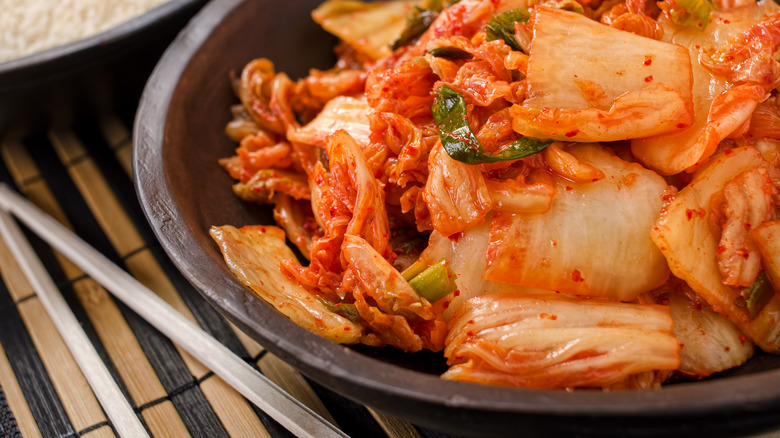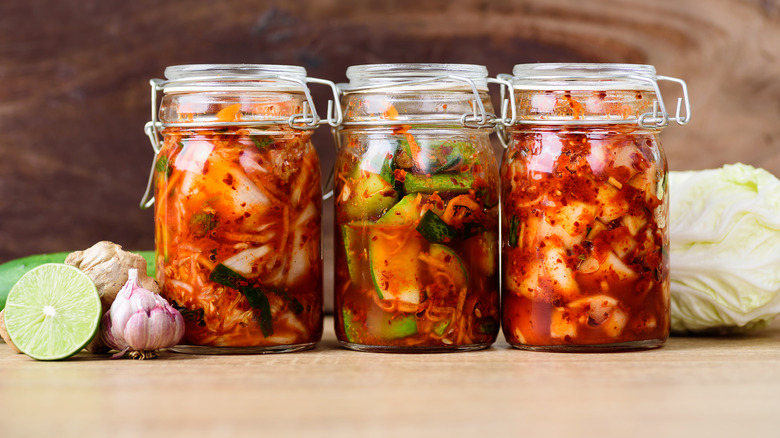Expert Advice For Storing And Aging Kimchi
Kimchi is a classic Korean side dish made with salted and spiced napa cabbage or radishes, fermented to perfection. If made correctly, it will keep in your fridge for months. But there is a line where the spicy, crunchy, umami flavor over-ferments and crosses into being vinegary and limp. Making homemade kimchi is time-consuming, and you certainly don't want to go through it only to find mold growing in your kimchi jar a week later. With that in mind, what's the best way to make sure it stays crunchy and fresh as long as possible? Good news: Daily Meal asked Ji Hye Kim, chef and owner of Miss Kim Korean restaurant in Ann Arbor, Michigan, to find out.
According to Kim, there's no specific point at which kimchi goes bad — unless it begins to grow mold, that is. "As long as you watch a couple key points in keeping kimchi, it does not go bad in a sense that it will be unsafe to eat," says Kim, adding, "you will, however, find your favorite period of ripeness, and there is no wrong answer." (Kim's is between four and six weeks from the make date).
That said, there are certain techniques that can help your kimchi stay good for months on end. Per Kim, this includes making sure not to introduce bacteria into your kimchi with dirty utensils, portioning out a week's supply into a smaller container, and making sure the solid pieces of your kimchi are covered in brine while in storage.
When it comes to homemade kimchi, limit air exposure
Part of the reason people love kimchi is because of its sour, tangy flavor, all thanks to the fermentation process. But as Ji Hye Kim puts it, exposure to oxygen "will make the kimchi too funky." This is because the fermentation that kimchi goes through works best in an anaerobic environment – one without oxygen. When it's exposed to air, oxygen facilitates bacteria growth, which in turn can interrupt the process or form mold. So how do you avoid oxygen getting in your kimchi when it's ... everywhere?
According to Kim, there's an easy fix: Keep your kimchi in an airtight container and only open that container as needed. "If you're like me and you have a big jar in the fridge, portion out a pint or a quart for that week's consumption and keep the big jar closed tightly and hidden in the deepest corner of the fridge," Kim advises. She also recommends keeping the solid pieces of kimchi covered in brine, as this layer of liquid protection prevents oxygen from introducing too much bacteria, even when you crack open the lid. Finally, always use clean utensils when you're taking kimchi out of the jar to avoid introducing new bacteria to the batch.
If your kimchi has already gotten a little too funky to eat straight, don't despair — Kim has some ideas for you. From savory fried kimchi pancakes to kimchi fried rice and kimchi stews, she says that cooking over-fermented kimchi can mask the texture and soften the flavor to help you make sure none of your hard work in preparation and fermentation goes to waste.

